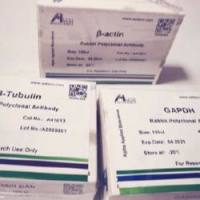Footprinting DNAProtein Interactions in Native Polyacrylamide Gels by Chemical Nucleolytic Activity of 1,10-PhenanthrolineCopper
互联网
781
Various methodologies have been developed for the detection of DNA-binding activities and the identification of the “footprints” of a protein on DNA. The most widely used footprinting techniques employ reagents such as deoxyribonuclease I (DNase I) and dimethyl sulfate (DMS) for protection analysis in solution. Nevertheless, these techniques have several disadvantages, and although these may be bypassed by coupling the footprinting reaction with an electrophoretic mobility-shift assay (EMSA), the size and the sequence specificity of DNase I and DMS as well as the problem of protein exchange during the footprinting reaction pose significant limitations. These limitations can be circumvented by combining the advantages of EMSA, with the subsequent exposure of the resolved DNA–protein complex(es) to the chemical nuclease 1,10-phenanthroline–copper ion (OP–Cu) while they are still embedded in the polyacrylamide matrix (in-gel assay ).









